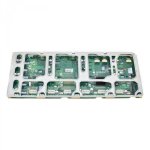- Joined
- Jan 9, 2024
- Messages
- 59
Happens to everyone at some point. Worst I've had was a Noctua NF-F12 iPPC at 2-3k RPM. Less linear velocity, but a very sharp leading edge.
Oh yeah, don't worry I've seen and probably done worse in my time roaming data centers. I've eyed my same Noctua fans that I have jammed in that USPS box with caution now haha. Those are 3x NF-A14 iPPC-3000s to help with additional drive cooling. The fans used by Supermicro are much smaller and obviously much faster. The housing is perfectly fine for protection against the fan itself unless you're a bonehead like me haha. It's all good though. Actually looking at the fan now it's kind of surprising how I managed to get my finger in there fast enough to do damage. https://store.supermicro.com/80mm-fan-0127l4.html
If the old one is still around, you can try re-pasting the heatsink on the expander, SAS2 expander backplanes are all probably 10+ years old by now. Also be sure to update the firmware on the backplane, if you can get it that far along - it's easy to miss, but high impact. Also, is this with a SAS2 or SAS3 HBA?
So I was actually curious on how to do this because the heatsink is directly attached to the controller it seems. Any ideas? I assume it's more of a thermal adhesive but I'm not too familiar with replacing. I would assume a heat gun. I wonder if that's really necessary though. I assume I'd have to replace the whole heatsink or some new interface (thermal tape)

Last edited:
